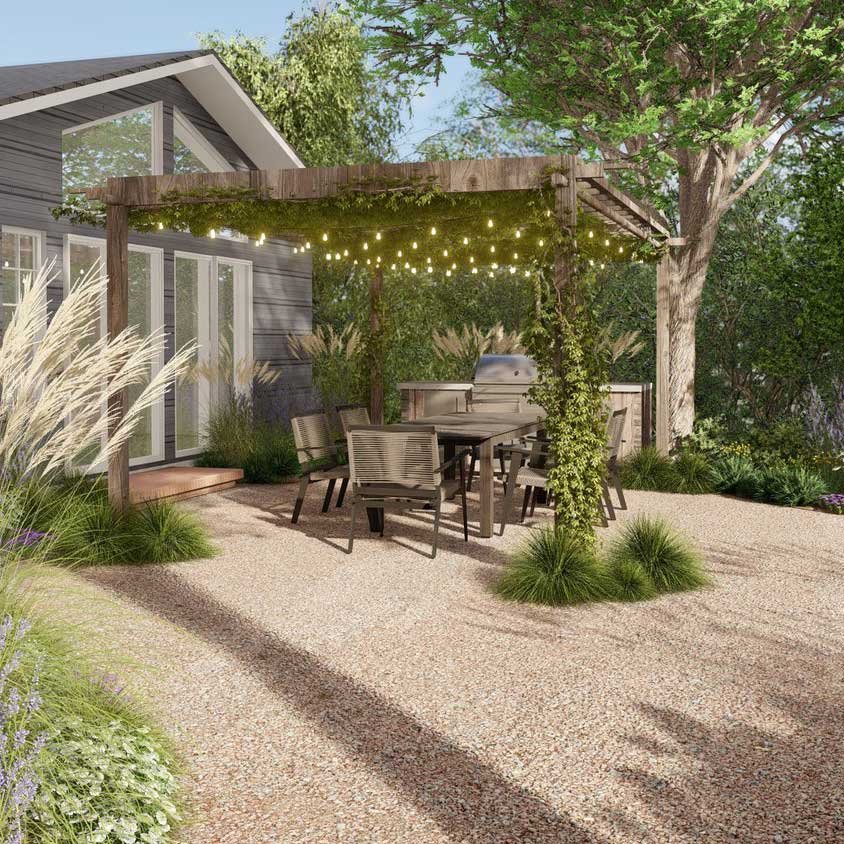Everything about Landscapers
Everything about Landscapers
Blog Article
The 6-Minute Rule for Landscapers
Table of ContentsUnknown Facts About Landscapers3 Easy Facts About Landscapers ExplainedThe 25-Second Trick For LandscapersThe Only Guide for LandscapersThe Main Principles Of Landscapers
In the PNW there are semi-deciduous or semi-evergreen plants that may shed their leaves depending on exactly how cool the winter is. - A level gathering space, made of wood or composite product (made to look like wood), usually nearby or affixed to a structure.

This is an all-natural process, and the result can be utilized for courses and patio areas. - Trick landscape features being recommended in a landscape style strategy.
4 Simple Techniques For Landscapers
These objectives assist the layout process, not the designer's style or preferences. Typical layout objectives in Rose city are reduced maintenance, dry spell tolerant, and animal pleasant.
However, in time this layer can get really thick and make it difficult for water, sun, and nutrients to get to parts of the grass.- The process of gathering and controlling the circulation of water on a home. This can be performed with grading, French drains, dry wells, permeable surfaces, sump pump, rainfall yards, and a lot more.
Characteristic at the base of hillsides, with natural springs, or filled with hefty clay have the most drainage issues.- A slow feeding watering system that uses adaptable tubes and emitters to send a precise quantity of water per plant. This is one of the most reliable technique of watering plants. - The capacity of a plant to survive without much summer water.
- A yard feature where water is stood for by an accumulated rock product, typically a crushed rock or granite.- A rock or flagstone outdoor patio, course, or walkway constructed without a concrete base.
Landscapers for Dummies
- A rock maintaining or cost-free standing wall surface built without the use of mortar. An extremely knowledgeable mason is required for a completely dry stack stone wall. Most wall surfaces in Portland are moist stacked, also if they seem. - An underground framework that gather water and allows it to slow percolate into the dirt around it.
Landscape design that works with a websites' atmosphere in both appearance and sustainability without unfavorable influences to the atmosphere. Interrupting the landscape is a line of demarcation that develops aesthetic passion in the yard by separating one sector from another segment. This can be visual or functional, keeping one aspect (such as pea crushed rock) from getting combined into one more (like bark dirt).
Locations can also have a feeling of "unit" offered by trees, various other plantings, fencings, or displays. The landscape near the entrance to a structure. A tree, shrub or creeping plant, educated to grow on a wall or fencing right into a details pattern. Particularly valuable for fruit trees, making it easy to gather the fruit over at this website and consisting of mess.
A plant that is not native to the area where it will certainly be grown. Thicker bladed turf lawn that spread out via rhizomes.: The degree of dirt on your home prior to bark dirt or compost is spread out.
What Does Landscapers Mean?

The objective, reason, or activity that a location is be landscaped for. Space for expanding plants for checking out, eating, or physical activity.
Rock product, either rounded or fractured, that is relatively tiny- normally 1" or less. Reduced plants that are allowed or urged to spread over a location. Can refer to any type of "hard" yard aspects including statuary or rocks but most typically is used to describe paths, patio areas, and walls.: Height distinction in between the level of water in a fish pond (or the level of the pump if it rests outside the pond) and the upper outlet of water which influences performance of the water pump in gph (gallons per hour). Dense hedges or trees that develop a fence, display, or boundary.

Some Ideas on Landscapers You Should Know
An even more loosened up yard dominated by bent instead than straight bed lines and a much less stiff framework. website link Conventional PNW landscapes are informal. A plant that spreads out greater than preferred, or into habitats where it does damage. Portland has a list of intrusive plants that need to not be set up in landscapes since they can infect forests or waterways and be hard to control.
Can consist of head placements and insurance coverage, pipe sizing, GPM specifications, and materials required to install this system. Accredited professional that designs landscapes, coached in design and design as well as in cultivation.
The expert that plans and creates landscape jobs, generally at a household or small business degree with the major layout inspiration on growings. Landscape designers commonly have much less education than Landscape Architects and are not licensed. A completed landscape layout, outlining all components for the new landscape. This normally takes the kind of a drawing on paper.
A water tight HDPE material straight from the source made use of below fish ponds, streams and waterfalls in water features. Using numerous plantings of the exact same range to fill up in an area in the landscape.
Report this page